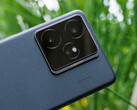Verdict - Good camera and AI in its focus
During our test, the Honor 400 impressed us with its accurate OLED display that's not only super bright, but also offers some eye-friendly functions. The phone's Snapdragon SoC delivers good everyday performance, but it doesn't leave much headroom, especially considering its six years of updates. Even so, the two available storage variants are generously sized and a clear plus point.
Honor has equipped its 400 model with numerous AI features. The first exclusive feature is the picture-to-video function, which delivers impressive results. The smartphone is rounded off with eSIM support, an IR blaster, fast charging and good battery life. Unfortunately, it isn't waterproof and doesn't support wireless charging.
Pros
Cons
Price and availability
Currently, the Honor 400 is not available to purchase in the United States.
Table of Contents
- Verdict - Good camera and AI in its focus
- Specifications: Honor 400
- Case and connectivity - The Honor 400 uses glass and plastic
- Communication and operation - The Honor smartphone with 5G and eSIM support
- Software and sustainability - The Honor 400 makes videos out of photos
- Cameras - 200 MPix, but no longer with an optical zoom
- Display - Super-bright display inside the Honor 400
- Performance, emissions and battery life
- Notebookcheck total rating
- Possible alternatives compared
Honor has given the design of its Numbers series a major overhaul, taking up the design of the Huawei Pura 70 Ultra. Its SoC remains unchanged from its predecessor, the Honor 200, but its display is smaller, its battery is larger and Honor has removed the zoom lens. On top of this are exclusive AI features and long software support.
Specifications: Honor 400
Case and connectivity - The Honor 400 uses glass and plastic
The Honor 400 is more compact than its predecessor and is protected by unspecified glass on both the front and back. The back is matte and relatively resistant to fingerprint marks. Its frame is made of plastic. All in all, the Honor 400 features a high-quality appearance, impressive build quality, and good display-to-surface ratio (90%).
Unfortunately, its USB port only offers the 2.0 standard and its IP certification could have been better, because although it's dustproof according to IP65, it's only protected against jets of water and not against submersion. Still, an IR blaster can be used to control your own home entertainment or air conditioning.
Communication and operation - The Honor smartphone with 5G and eSIM support
The Honor 400 accesses the web wirelessly using Wi-Fi 6, but without support for the 6 GHz. In combination with our reference router, the Asus ROG Rapture GT-AXE11000, its transfer rates were largely stable during our test, reaching the expected level.
When using the cellular network, all current standards including a wide range of frequencies are available. Its reception was good in a city environment during our test. Its call quality is natural with the phone held up to your ear, but the device's noise suppression reaches its limits in noisy environments. In addition to two physical nano SIM cards, users can activate an eSIM instead of the second SIM.
An optical fingerprint sensor, which is located beneath the phone's display, is available for biometric security, as well as facial recognition via the front-facing camera. The linear vibration motor provides subtle haptic feedback, which cannot be adjusted in the device's settings.
| Networking | |
| Honor 400 | |
| iperf3 transmit AXE11000 | |
| iperf3 receive AXE11000 | |
| Google Pixel 9a | |
| iperf3 receive AXE11000 | |
| iperf3 receive AXE11000 | |
| iperf3 transmit AXE11000 6GHz | |
| iperf3 receive AXE11000 6GHz | |
| Samsung Galaxy A56 5G | |
| iperf3 transmit AXE11000 | |
| iperf3 receive AXE11000 | |
| Motorola Edge 50 Pro | |
| iperf3 transmit AXE11000 6GHz | |
| iperf3 receive AXE11000 6GHz | |
| Average 802.11 a/b/g/n/ac/ax | |
| iperf3 transmit AXE11000 | |
| iperf3 receive AXE11000 | |
| iperf3 transmit AXE11000 6GHz | |
| iperf3 receive AXE11000 6GHz | |
| Average of class Smartphone | |
| iperf3 transmit AXE11000 | |
| iperf3 receive AXE11000 | |
| iperf3 transmit AXE11000 6GHz | |
| iperf3 receive AXE11000 6GHz | |
Software and sustainability - The Honor 400 makes videos out of photos
The Honor 400 is supplied with Google Android 15 and the MagicOS 9.0 user interface. Both major updates and security patches are set to be provided for six years (from market launch).
In terms of AI functions, the Honor 400 has a special feature on board: it can turn photos into small moving videos and breathe life into them. This is based on Google's Veo 2 and works well during everyday use.
The Honor 400 comes packaged inside a slim cardboard box, with no plastic to be seen. Honor hasn't provided any precise information on the sustainability of its smartphone. Nor does it provide spare parts or repair instructions for customers.
Cameras - 200 MPix, but no longer with an optical zoom
The phone's front camera has a resolution of 50 MPix and uses pixel binning. It takes good selfies that impress with a balanced image composition.
There is now only a dual camera on the back, and Honor has done away with the predecessor model's optical zoom. Instead, the high-resolution 200-MPix sensor is cropped while retaining a good quality up to a fourfold magnification. The photos we took with the Honor 400 are also good in other respects, although the autofocus didn't always work on the first attempt during our test.
Honor also provides users with an ultra-wide-angle lens, which delivers decent results, but photos are a little blurred towards the edges and lack some dynamic range. The integrated macro function is practical, on the other hand.
Videos can at best be recorded in Ultra HD (30fps). If you want to use 60fps, you'll have to make do with Full HD or 720p.
Image comparison
Choose a scene and navigate within the first image. One click changes the position on touchscreens. One click on the zoomed-in image opens the original in a new window. The first image shows the scaled photograph of the test device.
Main cameraMain cameraUltra-wide angle5x zoomLow light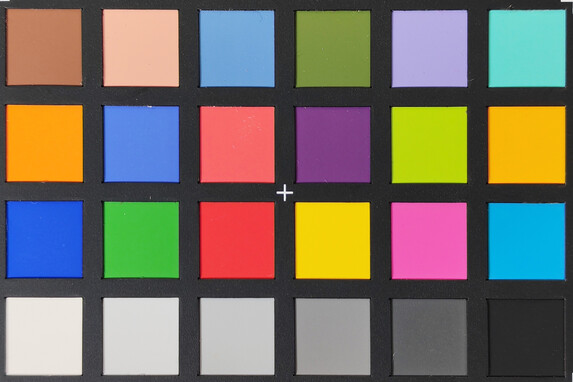

Display - Super-bright display inside the Honor 400
At 6.55 inches, the Honor 400's OLED display is one of the smaller representatives, but not with regard to its brightness. When depicting a full white display with the ambient light sensor activated, we measured an average of 1,606 cd/m²; this stayed at this level when depicting a smaller white excerpt (APL18). We only managed to reach the advertised peak brightness of 5,000 cd/m² during HDR playback.
The panel flickers at a base frequency of 60 Hz, which isn't particularly high. However, Honor uses a high-frequency PWM dimming of up to 3,840 Hz, which, in combination with the flat amplitude curve, results in a display that is quite easy on the eyes. Users can also make use of a defocus function, which reduces strain when driving, for example.
| |||||||||||||||||||||||||
Brightness Distribution: 96 %
Center on Battery: 1605 cd/m²
Contrast: ∞:1 (Black: 0 cd/m²)
ΔE ColorChecker Calman: 0.7 | ∀{0.5-29.43 Ø4.77}
ΔE Greyscale Calman: 1.1 | ∀{0.09-98 Ø5}
99.3% sRGB (Calman 2D)
Gamma: 2.24
CCT: 6422 K
| Honor 400 OLED, 2736x1264, 6.6" | Google Pixel 9a pOLED, 2424x1080, 6.3" | Samsung Galaxy A56 5G Super AMOLED, 2340x1080, 6.7" | Motorola Edge 50 Pro P-OLED, 2712x1220, 6.7" | |
|---|---|---|---|---|
| Screen | -41% | -71% | -49% | |
| Brightness middle (cd/m²) | 1605 | 1978 23% | 1184 -26% | 1064 -34% |
| Brightness (cd/m²) | 1607 | 1775 10% | 1179 -27% | 1038 -35% |
| Brightness Distribution (%) | 96 | 76 -21% | 99 3% | 88 -8% |
| Black Level * (cd/m²) | ||||
| Colorchecker dE 2000 * | 0.7 | 1.1 -57% | 1.7 -143% | 1.17 -67% |
| Colorchecker dE 2000 max. * | 1.5 | 3 -100% | 3.2 -113% | 2.47 -65% |
| Greyscale dE 2000 * | 1.1 | 2.2 -100% | 2.4 -118% | 2 -82% |
| Gamma | 2.24 98% | 2.22 99% | 2.12 104% | 2.238 98% |
| CCT | 6422 101% | 6622 98% | 6544 99% | 6423 101% |
* ... smaller is better
| Display / APL18 Peak Brightness | |
| Google Pixel 9a | |
| Samsung Galaxy A56 5G | |
| Honor 400 | |
| Display / HDR Peak Brightness | |
| Honor 400 | |
| Google Pixel 9a | |
| Samsung Galaxy A56 5G | |
Screen Flickering / PWM (Pulse-Width Modulation)
| Screen flickering / PWM detected | 60 Hz Amplitude: 16.26 % Secondary Frequency: 3847 Hz | ||
The display backlight flickers at 60 Hz (worst case, e.g., utilizing PWM) . The frequency of 60 Hz is very low, so the flickering may cause eyestrain and headaches after extended use. In comparison: 53 % of all tested devices do not use PWM to dim the display. If PWM was detected, an average of 8091 (minimum: 5 - maximum: 343500) Hz was measured. | |||
Measurement series with fixed zoom level and different brightness settings (The amplitude curve at minimum brightness looks flat, but this is due to the scaling. The info box shows the enlarged version of the amplitude at minimum brightness).
Display Response Times
| ↔ Response Time Black to White | ||
|---|---|---|
| 0.96 ms ... rise ↗ and fall ↘ combined | ↗ 0.475 ms rise | |
| ↘ 0.481 ms fall | ||
| The screen shows very fast response rates in our tests and should be very well suited for fast-paced gaming. In comparison, all tested devices range from 0.1 (minimum) to 240 (maximum) ms. » 3 % of all devices are better. This means that the measured response time is better than the average of all tested devices (20.2 ms). | ||
| ↔ Response Time 50% Grey to 80% Grey | ||
| 1 ms ... rise ↗ and fall ↘ combined | ↗ 0.466 ms rise | |
| ↘ 0.5295 ms fall | ||
| The screen shows very fast response rates in our tests and should be very well suited for fast-paced gaming. In comparison, all tested devices range from 0.165 (minimum) to 636 (maximum) ms. » 3 % of all devices are better. This means that the measured response time is better than the average of all tested devices (31.6 ms). | ||
Performance, emissions and battery life
The Snapdragon 7 Gen 3 ensures good system performance, but the competition in this price range generally features more powerful SoCs. This is particularly noticeable when running more demanding applications or when apps are updated in the background.
Only in terms of graphics performance is the comparison field almost in line with this model, at least according to the 3DMark stress test, because the Honor 400 didn't throttle its performance. Although its surface temperatures rose noticeably, they never reached an uncomfortable range.
The phone's two speakers deliver a decent sound, but feel somewhat hollow at maximum volume and, as expected, the bass lacks power.
A 5,300 mAh battery gives the Honor 400 long battery runtimes. Although wireless charging is not supported, a full charge takes less than an hour using the optional 66-watt power adapter, and 50% is reached after just under 17 minutes.
(±) The maximum temperature on the upper side is 44.7 °C / 112 F, compared to the average of 35.2 °C / 95 F, ranging from 21.9 to 247 °C for the class Smartphone.
(±) The bottom heats up to a maximum of 43.4 °C / 110 F, compared to the average of 34 °C / 93 F
(+) In idle usage, the average temperature for the upper side is 29.2 °C / 85 F, compared to the device average of 32.9 °C / 91 F.
3DMark Steel Nomad stress test
| 3DMark | |
| Wild Life Stress Test Stability | |
| Honor 400 | |
| Samsung Galaxy A56 5G | |
| Motorola Edge 50 Pro | |
| Google Pixel 9a | |
| Steel Nomad Light Stress Test Stability | |
| Honor 400 | |
| Samsung Galaxy A56 5G | |
| Google Pixel 9a | |
Honor 400 audio analysis
(+) | speakers can play relatively loud (88 dB)
Bass 100 - 315 Hz
(-) | nearly no bass - on average 23.5% lower than median
(±) | linearity of bass is average (11.8% delta to prev. frequency)
Mids 400 - 2000 Hz
(+) | balanced mids - only 4.3% away from median
(+) | mids are linear (5.9% delta to prev. frequency)
Highs 2 - 16 kHz
(±) | higher highs - on average 6.3% higher than median
(+) | highs are linear (4.5% delta to prev. frequency)
Overall 100 - 16.000 Hz
(±) | linearity of overall sound is average (17.6% difference to median)
Compared to same class
» 13% of all tested devices in this class were better, 8% similar, 79% worse
» The best had a delta of 11%, average was 35%, worst was 134%
Compared to all devices tested
» 34% of all tested devices were better, 8% similar, 58% worse
» The best had a delta of 4%, average was 24%, worst was 134%
Samsung Galaxy A56 5G audio analysis
(+) | speakers can play relatively loud (87.7 dB)
Bass 100 - 315 Hz
(-) | nearly no bass - on average 22.3% lower than median
(±) | linearity of bass is average (8.1% delta to prev. frequency)
Mids 400 - 2000 Hz
(±) | higher mids - on average 5.1% higher than median
(+) | mids are linear (5.8% delta to prev. frequency)
Highs 2 - 16 kHz
(±) | higher highs - on average 8% higher than median
(+) | highs are linear (5.5% delta to prev. frequency)
Overall 100 - 16.000 Hz
(±) | linearity of overall sound is average (20.5% difference to median)
Compared to same class
» 35% of all tested devices in this class were better, 9% similar, 56% worse
» The best had a delta of 11%, average was 35%, worst was 134%
Compared to all devices tested
» 54% of all tested devices were better, 8% similar, 39% worse
» The best had a delta of 4%, average was 24%, worst was 134%
| Battery runtime - WiFi v1.3 | |
| Honor 400 | |
| Google Pixel 9a | |
| Samsung Galaxy A56 5G | |
| Motorola Edge 50 Pro | |
Notebookcheck total rating
The Honor 400 is a powerful mid-range smartphone that offers a well-rounded overall package to counter the top dogs from Samsung and Google.
However, its IP certification should really be better and wireless charging is also missing from the device.
Honor 400
- 06/25/2025 v8
Daniel Schmidt
Possible alternatives compared
Image | Model / Review | Price | Weight | Drive | Display |
|---|---|---|---|---|---|
| Honor 400 Qualcomm Snapdragon 7 Gen 3 ⎘ Qualcomm Adreno 720 ⎘ 8 GB Memory, 512 GB | Amazon: 1. $11.99 Ibywind for Honor 400 5G Scr... 2. $11.99 Ibywind For Honor 400 Pro 5G... 3. $11.99 Ibywind For Honor 400 Lite 5... List Price: 550€ | 184 g | 512 GB UFS 3.1 Flash | 6.55" 2736x1264 460 PPI OLED | |
| Google Pixel 9a Google Tensor G4 ⎘ ARM Mali-G715 MP7 ⎘ 8 GB Memory, 128 GB | Amazon: 1. $459.00 Google Pixel 9a with Gemini ... 2. $7.99 Supershieldz (3 Pack) Design... 3. $9.84 Ferilinso 3 Pack Privacy Scr... List Price: 549€ | 185.9 g | 128 GB UFS 3.1 Flash | 6.30" 2424x1080 421 PPI pOLED | |
| Samsung Galaxy A56 5G Samsung Exynos 1580 ⎘ Samsung Xclipse 540 ⎘ 8 GB Memory, 128 GB | Amazon: 1. $366.20 Samsung Galaxy A56 5G 2025 |... 2. $349.99 Samsung Galaxy A56 5G 2025 |... 3. $399.99 Samsung Galaxy A56 5G Cell P... List Price: 479€ | 198 g | 128 GB UFS 3.1 Flash | 6.70" 2340x1080 385 PPI Super AMOLED | |
| Motorola Edge 50 Pro Qualcomm Snapdragon 7 Gen 3 ⎘ Qualcomm Adreno 720 ⎘ 12 GB Memory, 512 GB UFS 2.1 | Amazon: 1. $599.96 Motorola Moto Edge 60 Pro 5G... 2. $549.99 Motorola Moto Edge 50 Pro 5G... 3. $7.99 POHYPYZ 3 Pack Screen Protec... List Price: 699€ | 186 g | 512 GB UFS 2.2 Flash | 6.70" 2712x1220 444 PPI P-OLED |
Transparency
The selection of devices to be reviewed is made by our editorial team. The test sample was given to the author by the manufacturer free of charge for the purposes of review. There was no third-party influence on this review, nor did the manufacturer receive a copy of this review before publication. There was no obligation to publish this review. As an independent media company, Notebookcheck is not subjected to the authority of manufacturers, retailers or publishers.
This is how Notebookcheck is testing
Every year, Notebookcheck independently reviews hundreds of laptops and smartphones using standardized procedures to ensure that all results are comparable. We have continuously developed our test methods for around 20 years and set industry standards in the process. In our test labs, high-quality measuring equipment is utilized by experienced technicians and editors. These tests involve a multi-stage validation process. Our complex rating system is based on hundreds of well-founded measurements and benchmarks, which maintains objectivity. Further information on our test methods can be found here.




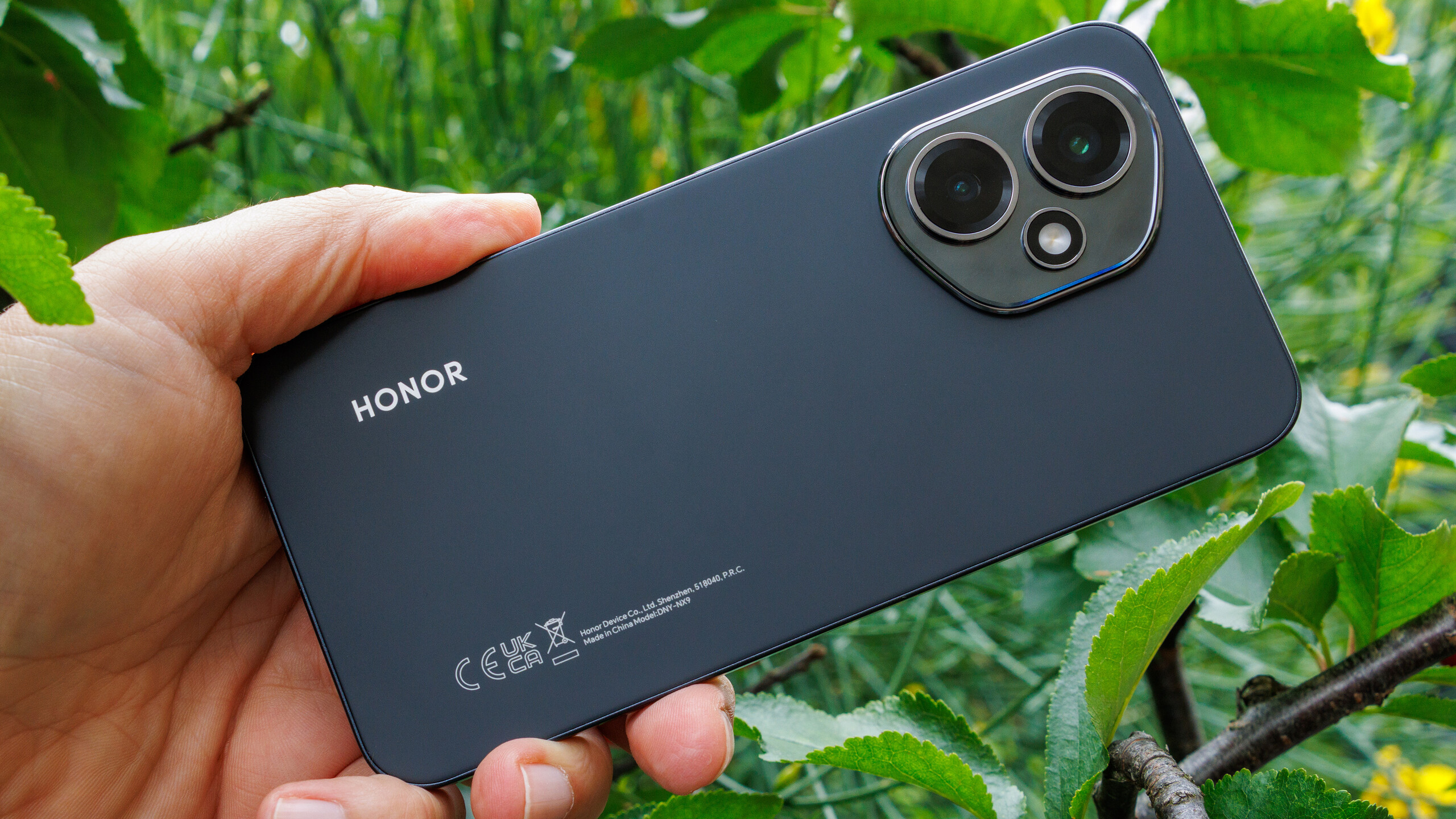
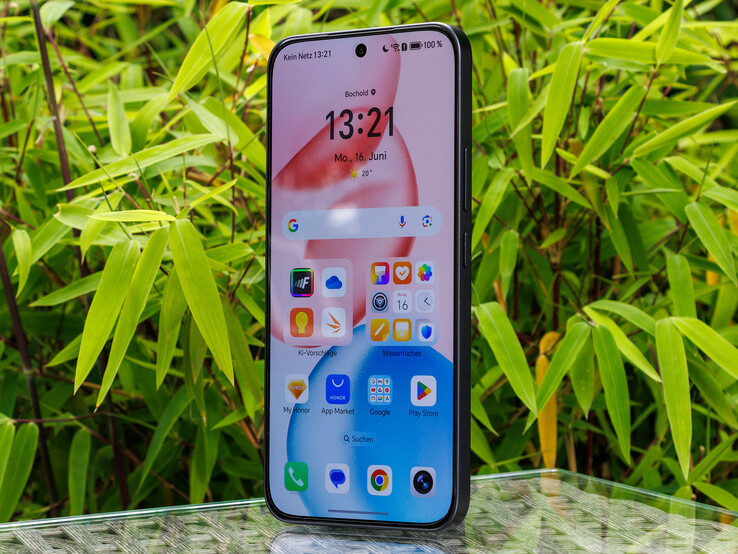










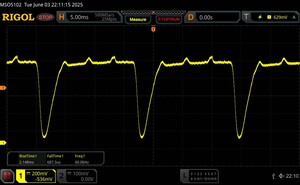





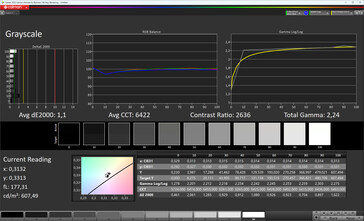




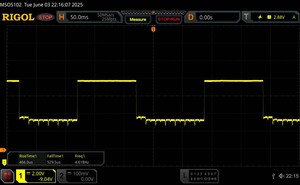
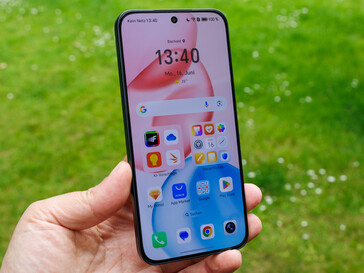

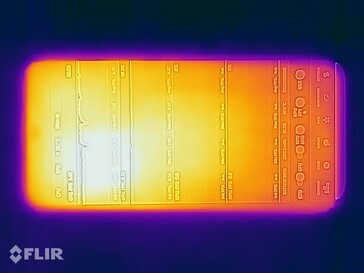
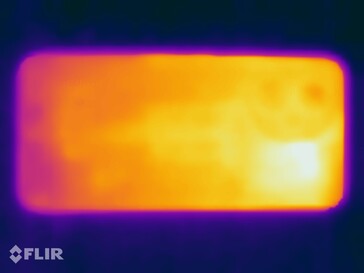
 Total Sustainability Score:
Total Sustainability Score: 


